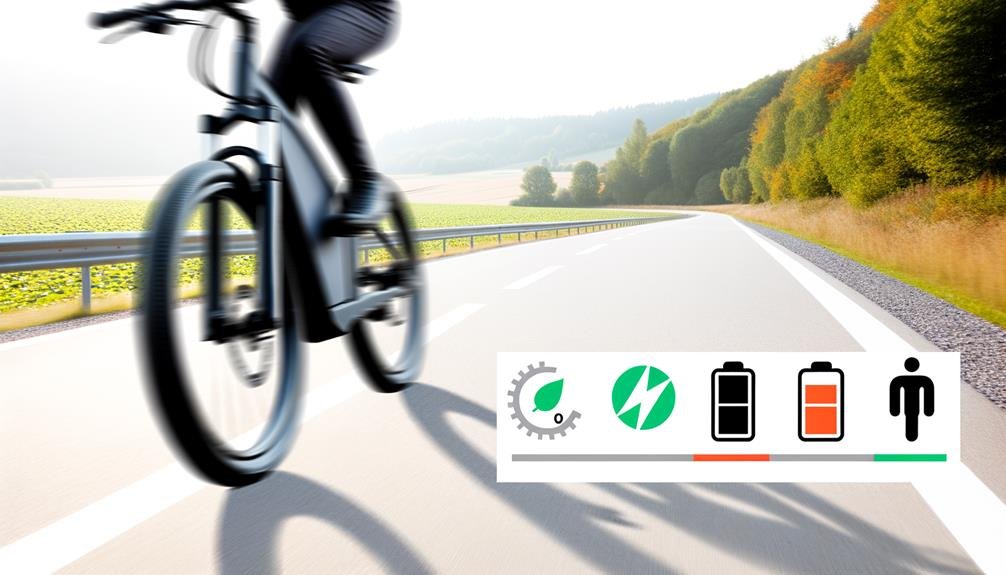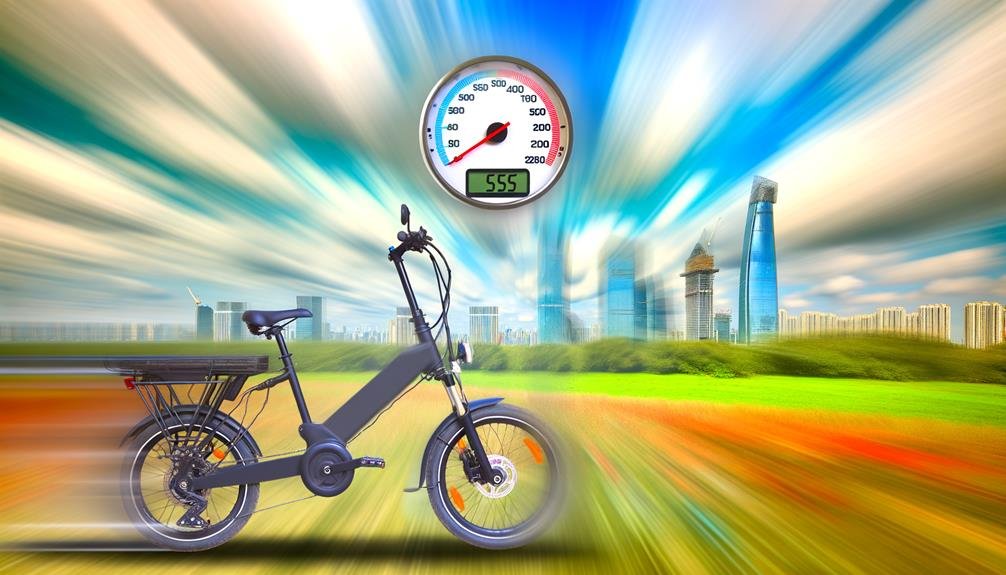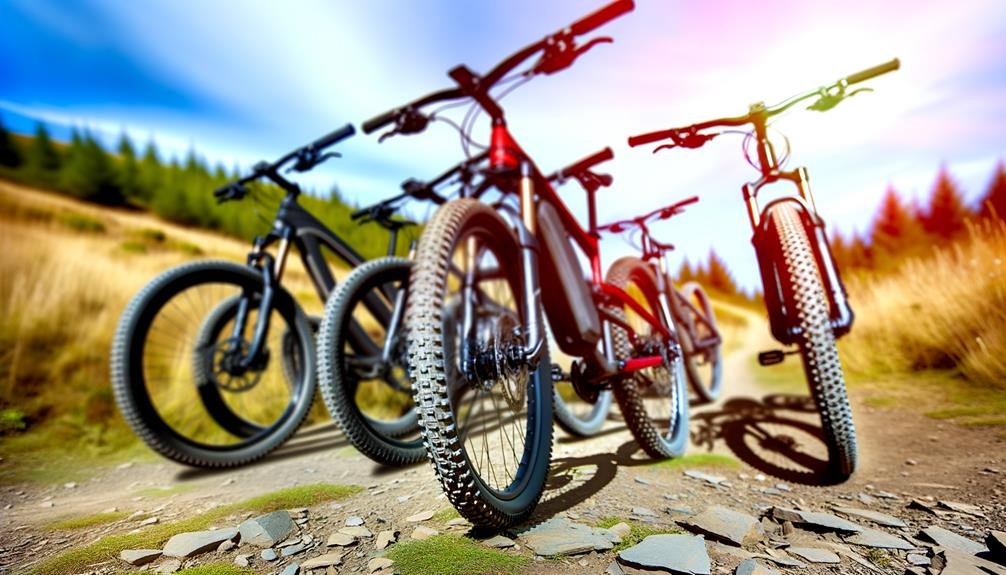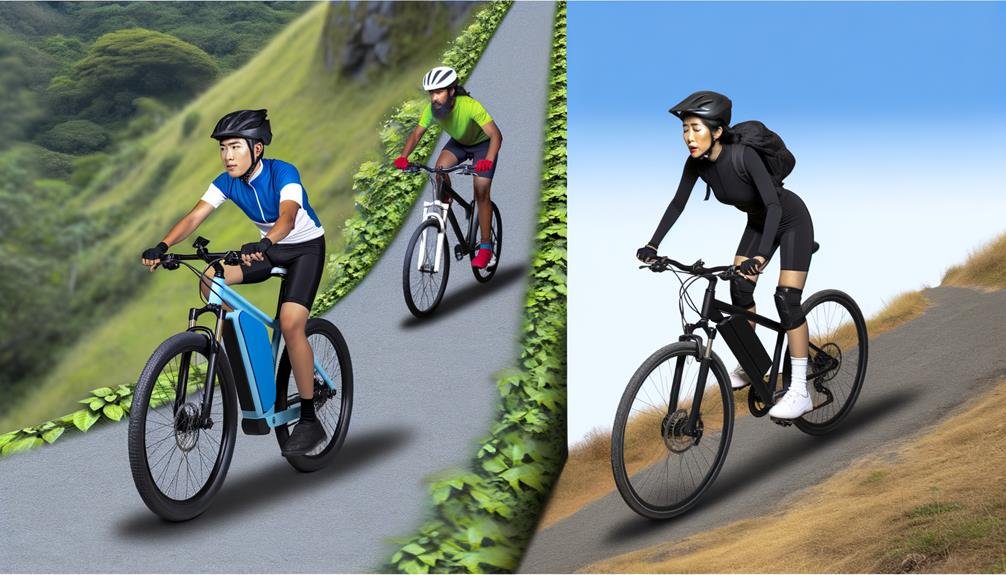Charles Miller is a veteran bike enthusiast with over 12 years of experience dealing with bikes as a mechanic. Despite immense love and expertise for...
In a world that's becoming as fast-paced as a horse and buggy race, the rise of electric bikes has begun to reshape urban mobility. I've noticed a growing curiosity about how fast these modern contraptions can legally go.
For starters, it's crucial to know that the legal speed limit for e-bikes isn't a one-size-fits-all scenario. It varies, with factors such as local laws and the bike's classification playing significant roles.
However, the question remains: what's the fastest speed you can legally hit on an electric bike, and why should it matter to you? Stick around, and we'll unravel this conundrum together.
Key Takeaways
- Electric bikes are classified into three categories: Class 1, Class 2, and Class 3, each with different speed limits.
- Class 1 and Class 2 e-bikes have a maximum speed of 20 mph, while Class 3 e-bikes can reach a maximum speed of 28 mph.
- The power of the motor, weight of the bike and rider, terrain, and the combined effort of the motor and pedal power all influence the speed of an e-bike.
- It is important to understand the classifications and speed limits of electric bikes to ensure compliance with legal limits and ride safely and responsibly.
Understanding Electric Bike Speed Limits
To ensure safe riding, it's crucial to understand the legal speed limits for electric bikes, which in the United States, vary depending on their class. Within our thriving e-bike community, we recognize the importance of adhering to these speed limits and laws.
Class 1 electric bikes go up to a maximum assisted speed of 20 mph, just like Class 2 e-bikes. However, the main difference lies in how the bike achieves this speed. Class 1 e-bike requires pedaling to hit this speed, while Class 2 e-bike can reach the same speed limit even without pedaling. On the other hand, Class 3 e-bikes have a higher maximum assisted speed of 28 mph, offering more speed for those who need it.
It's legal to ride these e-bikes within these speed limits. However, state laws may have additional regulations, so it's a good idea to check with your local authorities. Understanding electric bike speed limits isn't just about riding faster; it's about ensuring we all enjoy the ride while staying safe and legal. This knowledge strengthens our sense of belonging, as we harmoniously share the road, respecting both the law and each other.
Classifications of Electric Bikes
Diving into the classifications of electric bikes, we find three main categories: Class 1, Class 2, and Class 3, each with its unique features and speed limits. As members of the e-bike community, it's vital to understand these categories as they're part of the e-bike laws that govern how fast an e-bike can go legally.
Class 1 electric bikes, or Class 1 e-bikes, are pedal-assist only, which means the motor assists you only when you're pedaling. The maximum assisted speed for these types of electric bikes is 20 mph.
Meanwhile, Class 2 e-bikes are throttle-assist only, meaning the motor can power the bike up to 20 mph even if you're not pedaling. Lastly, Class 3 e-bikes are pedal-assist like Class 1, but with a higher maximum assisted speed of 28 mph.
Here's an easy-to-digest table summarizing these classes of electric bikes:
| Class | Assistance Type | Maximum Speed |
|---|---|---|
| Class 1 | Pedal-Assist | 20 mph |
| Class 2 | Throttle-Assist | 20 mph |
| Class 3 | Pedal-Assist | 28 mph |
Understanding these classifications of electric bikes not only helps us abide by the legal limits but also allows us to feel more connected and informed as part of the electric bicycle community.
Factors Influencing E-Bike Speed

Let's move on to explore the factors that influence the speed of e-bikes.
It's crucial to understand that the power of the motor and legal speed limits significantly impact how fast an e-bike can go.
The weight of the bike and rider, the terrain, and the combined effort of the motor and pedal power are also key considerations.
Legal Speed Limits
Understanding the speed limits of e-bikes is crucial, as they vary by class and are impacted by factors such as motor power, rider weight, and terrain. We're part of a community who wants to know: How fast do electric bikes go?
- Class 1 e-bikes, with electrical assistance, can go as fast as 20 miles per hour.
- Class 2 e-bikes have the same top speed, but it's the motor, not the pedaling, getting you there.
- Class 3 electric bikes, whose maximum speed is 28 miles per hour, offer the fastest electrical assistance.
- Always check your local and federal law for speed limits.
This is your ebike's potential, but remember, your speed depends on more than just the class of your bike. Join the e-bike movement and enjoy the ride!
Motor Power Impact
While we've explored the legal speed limits for e-bikes, it's equally critical to grasp how factors such as motor power, weight, and terrain can influence your ride's pace. The motor power, or power rating, can significantly affect how fast an E-bike can go. A FAST BIKE with a high power rating will go faster than an e-bike with an electric motor of less power.
Consider the following table:
| Factor | High Impact | Low Impact |
|---|---|---|
| Motor Power | High Power Rating | Low Power Rating |
| Weight | Heavy E-bike/Rider | Light E-bike/Rider |
| Terrain | Uphill | Flat |
Legal Boundaries for E-Bike Speeds
Often, riders aren't aware that legal boundaries for e-bike speeds vary depending on the class of the bike. This can lead to confusion about how fast an electric bike can legally go.
In the United States, e-bikes are categorized into three classes. Each class has different levels of speed on a paved, level surface that the bike's motor can assist with while ridden.
- Class 1: E-bikes are allowed to go up to 20 mph with motor assistance. Beyond this speed, the motor won't give you a boost.
- Class 2: Like Class 1, the top speed is 20 mph. But unlike Class 1, you can reach this speed without pedaling, thanks to the throttle.
- Class 3: The fastest of the lot, these e-bikes can go as fast as 28 mph with pedal assistance. Hence, the term 'Class 3: 28 mph' is often used.
- Helmets: Always remember, regardless of the speed, safety first! Some states mandate the use of helmets when riding an e-bike, especially for the faster Class 3.
The Impact of Speed Ratings

Knowing the speed ratings of your e-bike isn't just about knowing how fast you can go; it's a crucial part of ensuring you're riding safely and legally. Recognizing this, let's delve into the impact of speed ratings on your electric bike ride.
Speed ratings, also known as speed limits, relate to the maximum speed at which an e-bike can legally go. These vary by class: Class 1 and 2 e-bikes have a maximum speed of 20 mph, while Class 3 e-bikes can go faster, up to 28 mph.
Understanding these ratings is not just about going fast on your e-bike. It's also about ensuring we're part of a safe and responsible community of riders. To help, I've put together a table that details the speed ratings for each class of e-bike:
| E-Bike Class | Maximum Speed (mph) |
|---|---|
| Class 1 | 20 |
| Class 2 | 20 |
| Class 3 | 28 |
Tips to Maximize E-Bike Speed
Now that we've covered the importance of speed ratings and their role in safety and legality, let's explore some practical tips to maximize your e-bike's speed without breaking any rules.
- Power of the Motor: When it comes to electric bikes, the motor is key. Powerful motors provide a greater amount of power, allowing you to travel at speeds that can make your ride faster.
- Weight Considerations: E-bikes are sensitive to weight. A lighter load makes it easier for the motor to push, which can increase your speed.
- Terrain Awareness: Different terrains require different amounts of power. Flat roads allow you to ride faster than uphill ones. Tailor your expectations and speed based on the landscape.
- Pedal Assist: Pedal assist provides power to augment your efforts. Proper use of this feature can help maximize your e-bike's speed.
Frequently Asked Questions
How Fast Are You Allowed to Go on an Electric Bike?
In my experience, you're typically allowed to go up to 20 mph on Class 1 and 2 electric bikes, and up to 28 mph on Class 3 e-bikes. But remember, local laws can vary, so check your state's regulations.
What Is the Fastest Legal Speed for an Ebike?
I'm glad you asked about ebike speeds. Legally, the fastest an electric bike can go depends on its class. Class 1 and 2 max out at 20 mph, while Class 3 can reach up to 28 mph.
Can an Ebike Go 30 Mph?
Can an e-bike hit 30 mph? Unfortunately, no. Generally, electric bikes reach a top speed of 20-28 mph, depending on their class. Breaking this limit isn't just illegal, it's also unsafe for riders.
Why Are E-Bikes Limited to 20 Mph?
E-bikes are limited to 20 mph primarily for safety reasons. It's a speed that balances the need for efficiency and quick travel, while still keeping riders and those around them relatively safe.
Conclusion
So there you have it, folks! The world of e-bikes is as vast as the universe itself, but don't let those speed limits spook you.
With Class 1 and 2 capping at 20 mph and Class 3 hitting the high notes at 28 mph, there's plenty of room to roam.
Remember, each bike has its own rhythm. Just follow the law, respect your ride, and you'll be cruising faster than a cheetah on a skateboard!

Charles Miller is a veteran bike enthusiast with over 12 years of experience dealing with bikes as a mechanic. Despite immense love and expertise for his Tacoma, he rides his Trek Ebike more. Anytime you meet him, you’ll either hear him talking about Bikes, or writing about all things bikes and cars on this blog.
More Posts


